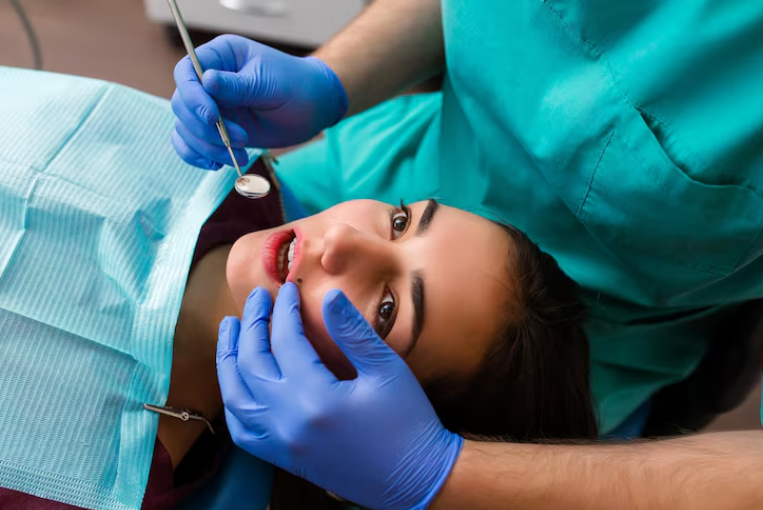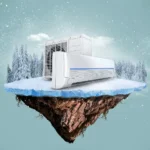Dental problems sometimes happen at the worst time. You could be enjoying dinner or settling into bed when sudden throbbing tooth pain hits. Do you wait until the next day or call for help right away?
Knowing when to reach out to a dentist is critical to saving your tooth, easing pain, and preventing severe infection. This guide will discuss dental emergencies, symptoms you shouldn’t ignore, and what to expect once you arrive for your emergency visit.
What Counts as a Dental Emergency?
A dental emergency is any issue involving your teeth, gums, or mouth that requires immediate attention to stop pain, control bleeding, or prevent long-term damage. If a problem causes severe pain, swelling, or bleeding, or makes it difficult to eat or sleep, it’s best to contact a dentist immediately. While some discomfort can wait a day or two, specific symptoms require urgent professional care.
Signs of Emergency Dental Problems
Even if tooth pain comes and goes, there are warning signs you should never dismiss. These often indicate underlying issues that can lead to infection, tooth loss, or more serious health risks if left untreated. Here are common symptoms and what you can do until you reach the dentist:
- Severe or Persistent Tooth Pain
A toothache that won’t disappear often signals an infection, abscess, or nerve damage. Over-the-counter medicines may temporarily dull the pain, but an emergency dentist can determine the root cause and provide appropriate treatment. - Knocked-Out or Loose Tooth
Time is critical when an adult tooth completely dislodges from its socket. Ideally, you have 30 to 60 minutes to increase the chances of saving it. Gently rinse the tooth without scrubbing or removing tissue, then place it back in the socket if possible. Otherwise, keep it moist in milk until you reach the dentist. - Cracked, Broken, or Chipped Tooth
While a small chip isn’t always an emergency, a cracked or broken tooth exposing inner layers can cause extreme pain and increase infection risks. Contact a dentist right away, especially if there’s bleeding or swelling. Rinse your mouth with warm water, save tooth fragments, and apply a cold compress if there’s swelling. - Swelling in the Face, Jaw, or Gums
Facial or gum swelling can impede speech and eating ability. It often signals a gum infection or dental abscess. If not treated quickly, the bacterial infection can spread to other body parts and become serious.
Seek emergency dental care if the swelling is severe or accompanied by a fever. In the meantime, gently wash your mouth with mild salt water, use a cold compress to ease discomfort, and take over-the-counter pain medication as directed. - Uncontrolled Bleeding After an Injury or Extraction
Excessive gum bleeding without any apparent reason requires immediate dental care. Rinse with warm salt water, cover any bleeding area with gauze, and apply pressure for 15–20 minutes. If the bleeding doesn’t slow after that, it may indicate a deeper issue, such as a clotting problem or a soft tissue wound that needs suturing. - Lost Filling or Crown
When a crown or filling falls out, your tooth may become extremely sensitive or painful. You may also experience discomfort or notice a strange taste in your mouth. Keep the area clean, avoid chewing on that side, and request a same-day appointment with a dentist. Temporary dental cement (available at most pharmacies) can help protect the area until your visit.
What to Expect During Your Visit
Once you’ve recognized these symptoms and contacted your dentist, let’s discuss what happens during an emergency visit. Knowing how it will go can ease anxiety and help you prepare for the appointment:
- Quick Evaluation and Triage
Upon your arrival, your dentist will perform a fast but thorough assessment to determine the source and urgency of the problem. They’ll review your medical history and run X-ray scans to ensure no hidden issues are overlooked. - Pain and Infection Management
Once diagnosed, your dentist will take steps to manage your pain and control infection. You may receive local anesthesia, prescription pain medication, or antibiotics. Your dentist’s top priority is making you comfortable before starting treatment. - Emergency Treatment
The goal here is to save your natural tooth. Depending on the issue, your dentist may:
- Reattach or restore a cracked or broken tooth
- Perform a root canal to treat infection
- Replace a lost crown or filling
- Drain an abscess
- Extract a severely damaged or infected tooth
- If a complete fix isn’t immediately possible, your dentist will provide a temporary solution and schedule follow-up care.
- Follow-Up Care and Prevention
Before you leave, your dentist will explain how to care for the treated area and manage discomfort. They may also offer hygiene instructions and schedule a follow-up appointment to complete any remaining procedures. They may also share tips to prevent future emergencies, such as avoiding biting hard foods, wearing a mouthguard during sports, and maintaining regular checkups.
Protect Your Oral Health With Immediate Dental Care
Dental emergencies are alarming and stressful, but knowing the signs to look out for and acting swiftly makes all the difference. If you’re dealing with severe pain, swelling, or a mouth injury, don’t wait; call a local emergency dentist right away. They can handle time-sensitive cases efficiently to ease pain, stop infection, and save your smile.







